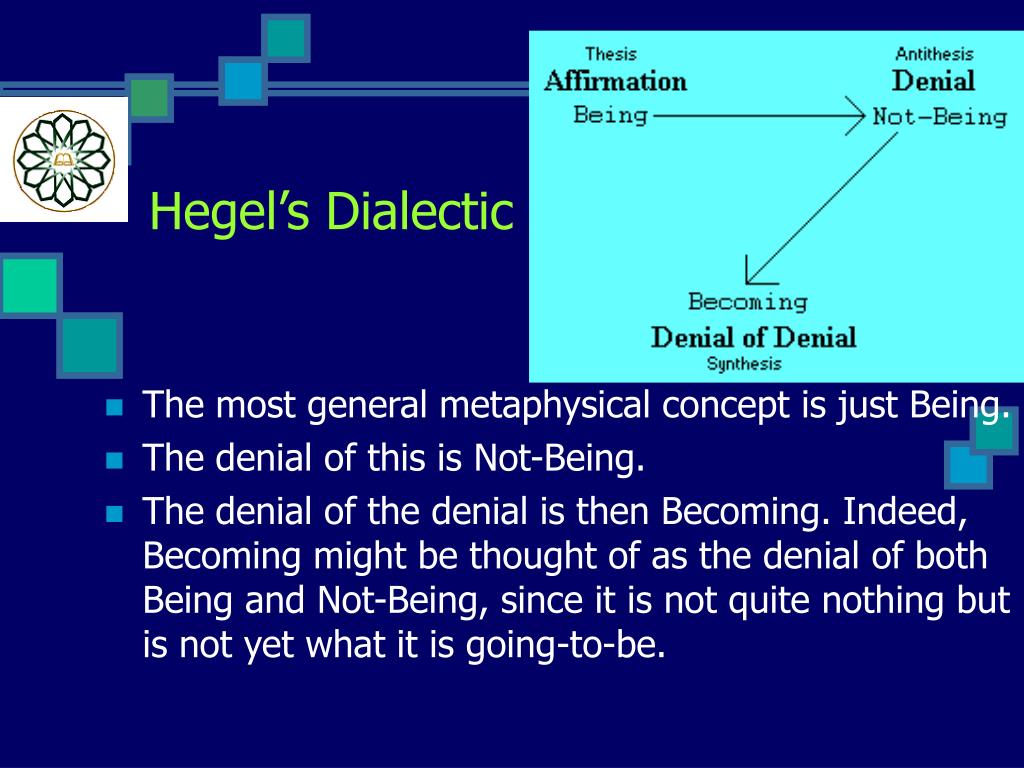

The half-space that we named Left can be Right, and the half-space that we named Right can be also Left. There is nothing that distinguishes them internally. But if we take now those half-spaces, or half-lines by themselves, or if we limit our thinking just to those abstractions (this is important), we can figure out that there is ideal symmetry between them. When we think of Left as something immediate (as Hegel uses the term), it marks let’s say half of the space (or line which is in front of us, etc.), and Right as something immediate marks the other half of the space (or line, or whatever). Let’s analyze those notions as abstractions.

The analogy would work with the notions of “Left” and “Right”. Here, I will give something that might not be named an example, but maybe better named an analogy of the dialectic method of Hegel. How can one argue that two different things which every person knows are different, are in fact same? And what is that talk about “sublating”? They sink from their initially imagined self-subsistence to the status of moments, which are still distinct but at the same time are sublated”? Those two are quotes taken from the first part of Hegel’s Science of Logic. becoming) but only as vanishing, sublated moments. After all, would any sensible person say such thing as “Pure Being and pure nothing, are therefore, the same” or that “They are (i.e. It is easy really to point to some quotes from his works taken out of the context, and say… Look, the person who said this, was surely talking nonsense. Hegel is considered as one of the hardest philosophers to read, and it is not rare case for people to say that this is not because what Hegel said is hard to understand or because his writing was bad, but that actually what Hegel wrote was nonsense.


 0 kommentar(er)
0 kommentar(er)
